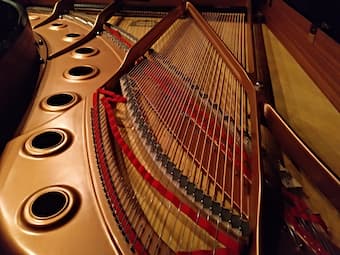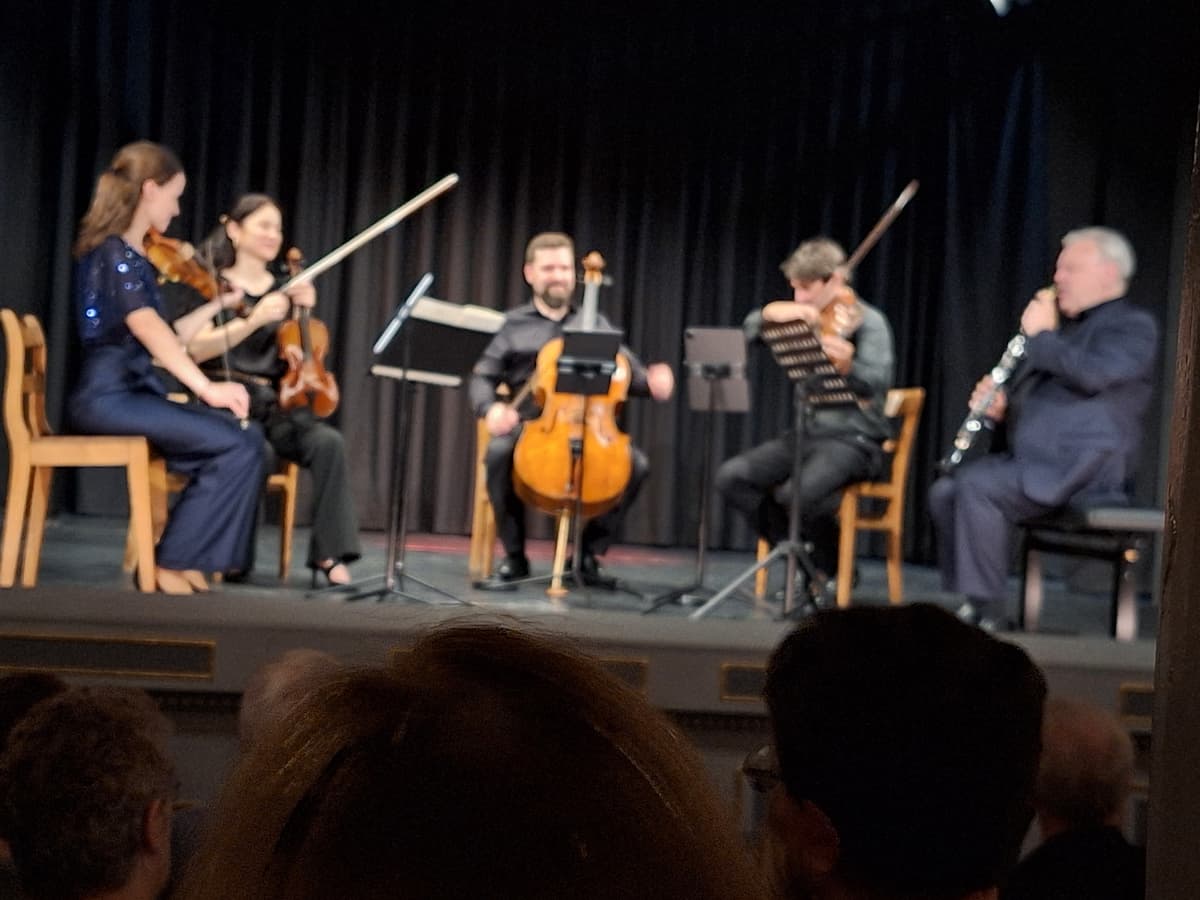My Favorite Musical Instrument: The Guitar Essay
Introduction, construction.
When one mentions the words musical instrument, then what comes in any person’s mind is sound. Sound may be defined as the mechanical vibrations which are transmitted by an elastic medium or the part of a transmitted signal which is audible. Guitar is one of these instruments and it has been there for along time. We have various types of guitars having different sounds. The most common are the classical, or nylon string, and the folk which has steel string. Each produces a unique sound depending on the materials from which the strings are made and their bodies’ composition, as well as the air between them.
A guitar has six strings tied taught and are placed over a hollow large body to resonate the sounds. The strings have open notes of E 2 , A 2 , D 3 , G 3 , B 3 , and E 4 , with the corresponding frequencies of 82 Hz, 110 Hz, 147 Hz, 196 Hz, 247 Hz, 330 Hz respectively (Zachary, 1991). The frequencies listed are a representation of the root tone of each string. A guitar sounds as it does because of the overlay of various frequencies on individual string, or the overtones which are present. These overtones’ pattern and their strengths make a guitar produce different sound from other stringed instruments. The guitar also has a top plate which is usually made of spruce or a light, springy wood, about 2.5 mm thick. Inside the plate we have a series of braces which strengthen the plate and affect the vibrations of the top plate. The back plate is of much less importance musically for most frequencies. This is because it is normally held against the player’s body.
When the strings are plucked, they produce mechanical vibrations which give sound that is transferred into the guitar’s body. The vibrations produced by a guitar are known as standing waves since the strings are fixed at both ends. These waves do satisfy the relationship that exists between wavelength and frequency that originates from definition of waves where v is the wave’s velocity, f is its frequency and lambda is the wavelength (Arthur, 1990). Due to these vibrations, internal resonance is setup in the air chamber which is made by the body and causes the face plate and back plate to vibrate. These vibrations produce compressions and rarefactions which are high pressure zones and low-pressure zones respectively. Our ear interprets compression waves in the air as sound. At any given point in the air, which is near the source of sound, the molecules move backward and forward resulting in the air pressure varying up and down by small amounts.
The principal role of the body is to transmit the bridge’s vibration into the vibration of the air which is around it. Thus, it needs a large surface area to enable it push reasonable amount of air backward and forward. The top plate is made in a manner to allow it to vibrate up and down comparatively easily. The air inside the body is very important for the low range on the instrument. It can vibrate like the air in a bottle when blown across the top. When you sing a note lying between F#2 and A2 (depending on the type of guitar) while you are placing your ear near the sound hole, you will hear the air in the body resonating. This is referred to as the Helmholtz resonance and is as result of the air at the sound hole oscillating, enabled by the springiness nature of the air found inside the body. The effect of this resonance may also be experienced by one playing the A string open and as it is sounds, a piece of cardboard is moved back and forth across the sound hole. It is observed that the resonance stops or shifts to a lower frequency. When you close up the hole, you will notice the loss of bass response in the sound given out. The air inside is coupled to the lowest resonance of the top plate effectively. As a unit they do give a strong resonance at approximately an octave higher than the main air resonance. To some extent the air also couples the movement of the top and back plates. For an electric guitar, pick-ups which employ the principle of magnetic induction in relaying sound are used. The pick-ups are made of small electromagnets which do allow electric current to flow through them. They are situated closely to the strings hence induce north and south poles on the strings. They do convert motion energy into electrical energy. Plucking a string makes it oscillate or move in a wave-line manner which does affect the surrounding o f the pick-up thus causing a change in magnetic field (Neville & Thomas, 1998). These fluctuations in the magnetic field are relayed through the wires which are connecting the pick-up to the output jack. This is then transmitted to the amplifier which then sends them to the speaker which converts from electrical energy to sound energy (George, 1990).
In conclusion, musical instruments do have different constructions and designs. However, they share one thing in common which is to produce organized sound pleasant to the ear. Most sources of sound produce different frequencies or several notes at the same time. For a good musical instrument, these notes are mixed at an organized pattern to produce music, and this is clearly experienced in a guitar which is my favorite instrument.
Arthur, H. B. (1990). Fundamentals of Musical Acoustics. New York: Dover Publications.
George, B. (1990). Making Stringed Instruments: A workshop Guide. New York: Sterling Publications.
Neville, H. F., Thomas, D. R. (1998). The Physics of Musical Instruments . New York: Springer Verlag.
Zachary, T. R. (1991). Making Early Stringed Instruments. New York: Bold Strummer.
- Beatles Contribution to Rock Music
- A World Without the Beatles
- Science and Art: The Math in Music
- Infrared Radiation and Its Impact on Life
- The Zalora Company's Pricing Strategies
- A Classical Concert Analysis
- Haydn’s London and Beethoven’s Vienna
- European Maters in 18th Century in England
- The Influence of Australian Political Environment on the Development of the Country’s Music
- Music and Extra-Musical Forces
- Chicago (A-D)
- Chicago (N-B)
IvyPanda. (2022, April 25). My Favorite Musical Instrument: The Guitar. https://ivypanda.com/essays/my-favorite-musical-instrument-the-guitar/
"My Favorite Musical Instrument: The Guitar." IvyPanda , 25 Apr. 2022, ivypanda.com/essays/my-favorite-musical-instrument-the-guitar/.
IvyPanda . (2022) 'My Favorite Musical Instrument: The Guitar'. 25 April.
IvyPanda . 2022. "My Favorite Musical Instrument: The Guitar." April 25, 2022. https://ivypanda.com/essays/my-favorite-musical-instrument-the-guitar/.
1. IvyPanda . "My Favorite Musical Instrument: The Guitar." April 25, 2022. https://ivypanda.com/essays/my-favorite-musical-instrument-the-guitar/.
Bibliography
IvyPanda . "My Favorite Musical Instrument: The Guitar." April 25, 2022. https://ivypanda.com/essays/my-favorite-musical-instrument-the-guitar/.
- To find inspiration for your paper and overcome writer’s block
- As a source of information (ensure proper referencing)
- As a template for you assignment

It’s quite possible that this is what initially drew me to the piano as a young child. My paternal grandparents had an Edwardian upright piano in their front room which my grandfather could play quite competently. I recall perching next to him, watching his hands moving around the keys and enjoying the sounds. I also found the piano stool intriguing; an old-fashioned affair with a lift-up seat, it was the repository of a treasure trove of scores and song books. When I began having piano lessons, these old scores provided hours of entertainment. I would ramble through sonatas by Haydn and Mozart , playing badly but not caring. I was just enjoying the sounds of the instrument and the sensation of the silky ivory keys beneath my fingers. I probably didn’t realise it at the time, but these explorations were also crucial in honing my sight-reading skills.

© Ángel Martínez Martín / Unsplash
It’s important to love the instrument you choose to play; otherwise why else would you bother? I learnt the clarinet in my early teens, in order to play in the school orchestra, but this was my father’s chosen instrument and I always felt I was intruding on his world. But the piano was mine, it was my instrument, and the upright we had at home, rescued from a summerhouse and lovingly restored, was a companion and a place where stories and adventures were created.
Another aspect of the piano which fascinated me – and still does – was the apparent “loneliness” of the pianist (something I have written about here The Pianist’s Solitude ). The pianist, alone on the stage, has a particular mystique. While other musicians, be they soloists, ensembles or orchestras, generally sit facing the audience, the pianist does not, and this immediately changes the dynamic between performer and audience. I wonder if that sense of aloneness perhaps appealed to my only child sensibilities?
The piano’s range of sound and colours is extraordinary. It can sing the sweetest arias, loudly declaim, rumble, whisper, stutter…. Its sounds can hang in the air, long after the last note has sounded. It can surprise, soothe, enthral and entertain. Fleeting and effervescent at one moment, gritty and powerful the next, few other instruments have anything like the range of the piano – both tonally and dynamically. This gives composers and players a vast “playground” of timbres – Debussy ’s kaleidoscopic Pagodes , for example, or the plangent sonorities of Busoni ’s transcription of Bach’s mighty D minor Chaconne . In addition, one can be both soloist and accompanist, or even a full orchestra – and one only has to look to the declamary opening of Beethoven ’s ‘Hammerklavier’ sonata, for example, to appreciate the piano’s orchestral qualities.
And then we come to the repertoire! No other instrumentalist has the range of choice, at once a luxury and a headache. What on earth should I play next?? But the repertoire is so vast that it can satisfy every taste and level of ability. It is perhaps a mark of the instrument’s wide repertoire, that my tastes change frequently: after weeks spent working on Liszt ’s rich textures, Bach’s elegance is refreshing; Debussy’s sensuousness is tempered by the spare clarity of a contemporary miniature by Howard Skempton.
Through this wonderful repertoire we are connected to some of mankind’s greatest creators, and as players we can share this extraordinary creation with others.
For more of the best in classical music, sign up to our E-Newsletter


Leave a Comment Cancel Comment
All fields are required. Your email address will not be published.
Save my name, email, and website in this browser for the next time I comment.

IMAGES
VIDEO